 Saving Susy Sweetchild (Silver Screen Historical Mystery #3) by Barbara Hambly
Saving Susy Sweetchild (Silver Screen Historical Mystery #3) by Barbara Hambly Format: eARC
Source: supplied by publisher via NetGalley
Formats available: hardcover, ebook
Genres: historical fiction, historical mystery, mystery
Series: Silver Screen Historical Mystery #3
Pages: 293
Published by Severn House on September 3, 2024
Purchasing Info: Author's Website, Publisher's Website, Amazon, Barnes & Noble, Kobo, Bookshop.org, Better World Books
Goodreads
Welcome to Hollywood of the 1920 a world filled with glamour, fake names . . . and the occasional felony!
July, 1924. After nine months of living in Hollywood and working as a companion to her beautiful silent-movie star sister-in-law, young British widow Emma Blackstone is settling into her new doctoring film scenarios whenever the regular scenarist is overwhelmed with work, which seems to be most of the time.
Shoots for the Western movie Our Tiny Miracle are in full swing, with little seven-year-old Susy Sweetchild playing the lead and acting most professionally. Maybe too professionally, Emma thinks, shocked to the core when the child star is nearly killed in a stunt scene and her mother - former screen siren Selina Sutton - seems only to care that Susy gets the job done.
But Emma's concerns only worsen when news reaches her that Susy and her mother have been kidnapped. The ransom note says to keep the cops out of it, so it's up to Emma and Kitty to find them before the unthinkable happens and Emma is forced to rewrite Our Tiny Miracle with a far more tragic ending . . .
New York Times bestselling author Barbara Hambly once again brings the glamour and intrigue of Hollywood to life! An unputdownable mystery for fans of female-fronted historical mysteries set in the roaring twenties.
My Review:
Emma Blackstone, after nearly a year in Hollywood as her sister-in-law’s friend, confidant, dog handler and general factotum, as well as serving as a script doctor for Foremost Studios for almost as long, has learned the way that things work in Hollywood – no matter how often she wishes she didn’t.
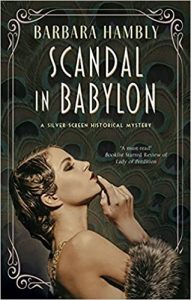 Because she sees entirely too much, and is all too aware that she can’t fix ANY of it. Although she certainly does what she can, as shown in the first two books in the Silver Screen Historical Mysteries, Scandal in Babylon and One Extra Corpse.
Because she sees entirely too much, and is all too aware that she can’t fix ANY of it. Although she certainly does what she can, as shown in the first two books in the Silver Screen Historical Mysteries, Scandal in Babylon and One Extra Corpse.
But Susy Sweetchild’s situation still pierces her straight to the heart. Because the child is clearly – and justifiably – frightened to death. And is just as clearly aware that no one can help her or save her no matter how much they want to.
It’s 1924, and Hollywood is still the ‘Wild West’ when it comes to rules and regulations. Prohibition is in full swing, but bootlegged booze is openly everywhere. OSHA, the Occupational Safety and Health Administration, won’t exist for another 45 years and child actors like Susy have no rights whatsoever – not even to the money they make.
Especially not to the money they make.
Susy is only seven years old, she’s one of Foremost Pictures biggest moneymakers, and she’s supporting her stage mother, her alcoholic father, her mother’s business manager and her mother’s succession of lovers and THEIR failed businesses as well as her father’s drinking habit. And quite possibly the partridge in the pear tree.
The only person on Susy’s side is her cat Mr. Gray, and poor Mr. Gray is even more of a hostage than she is. If Susy ‘misbehaves’ in any way, Mr. Gray is done for. And Susy is all too aware of the threat.
Possibly so is Mr. Gray. The cat seems both smart and sober, which is more than can be said for a lot of the humans in this story.
Emma would like to rescue Susy, but she has entirely too many hostages to fortune of her own to step that far out of line. She also knows it won’t do any good, as the powers that be in Los Angeles are all too aware of the side on which their bread is buttered, and that the studios are the ones doing the buttering.
But the status quo of Susy’s dreadful situation and anyone’s ability to help her out of it goes from bad to worse when the child star and her mother are kidnapped, along with Mr. Gray – a ginormous clue that should have occurred to more people an awful lot sooner.
Someone is extorting $100,000 from the studio for Susy’s safe return. (That’s something like $18,000,000 in today’s dollars!) There are multiple ransom notes being delivered, quite possibly from multiple sources. The police are not involved in the case, but the gossip columnists and the bootleggers are.
Considering how frequently the adults – including Emma and her Scooby Gang – are misdirected, as reluctant as the studio is to pay all that money to rescue a child star who is rapidly growing out of her cute and winsome phase, it looks like the princess is going to have to rescue herself in this one.
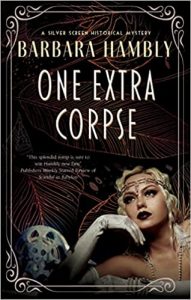 Escape Rating B: There are two stories going on in Saving Susy Sweetchild, and I have to admit that one interested me considerably more than the other.
Escape Rating B: There are two stories going on in Saving Susy Sweetchild, and I have to admit that one interested me considerably more than the other.
The first is, of course, the mystery of who kidnapped Susy Sweetchild and whether the poor child can be found before it’s too late. The investigation of Susy’s abduction and ransom is the stuff of which Keystone Cops movies were made. No one covers themselves in glory in this part of the story – either because they are in on it, they intend to exploit its outcome, because they’ve been paid to look the other way or merely because they are simply incompetent but photogenic at the job they’re supposed to do.
Emma at least has a damn good excuse for not catching on right away – she’s not a professional detective, either police or private. It isn’t her job – she just cares about the kid and wants to help her.
But underneath – although often in plain sight – is the glimpse under the glitter and tinsel of Hollywood in the mid-1920s, before the Hays Code crackdown on ‘immorality’, before the talkies, and before the Great Depression.
We still read horrific stories about the treatment of child actors in Hollywood, and a lot of those stories are terrible to children and other living creatures. Susy will probably remind a lot of people of Shirley Temple, but by Temple’s time 15 years later, the situation had actually gotten a bit better. For select versions of ‘better’. Maybe less awful.
One of Susy Sweetchild’s contemporaries would have been another child actor named Jackie Coogan – who might be more familiar to readers as Uncle Fester in the 1960s Addams Family TV series. His relevance to Susy Sweetchild is that It was his lawsuit against his own mother in 1938, after he turned 21 and discovered that his mother had squandered his entire fortune, that finally put laws in place about the treatment of child actors AND the provision to put a portion of their income in trust for their adulthood.
All of the above tells readers that as much as I was following Susy’s fictional case, it was the factual underpinnings that truly had my attention for much of the story. The split in my attention wasn’t great for my absorption in Susy’s actual story, but the research dive was a lot of fun.
Howsomever, I did love the ending of Susy’s story. She was pretty much the only person who deserved a happy ending, and I was very relieved to see that she – and Mr. Gray – got exactly what they deserved – as did a whole lot of others who deserved something considerably less…happy.

 Where is Anybody? (Gideon Sable, #5) by
Where is Anybody? (Gideon Sable, #5) by  But he’s been trying to go straight – or as straight as anyone can who operates in Old Soho – after the events of
But he’s been trying to go straight – or as straight as anyone can who operates in Old Soho – after the events of 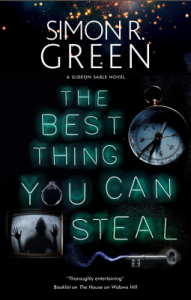 But he’s not really Gideon Sable. Or rather he IS Sable now but he hasn’t always been. In Old Soho, the mask and moniker of Gideon Sable belongs to whoever can steal it and keep it. In the first book in the series,
But he’s not really Gideon Sable. Or rather he IS Sable now but he hasn’t always been. In Old Soho, the mask and moniker of Gideon Sable belongs to whoever can steal it and keep it. In the first book in the series,  The Mummy of Mayfair (An Irregular Detective Mystery #2) by
The Mummy of Mayfair (An Irregular Detective Mystery #2) by 
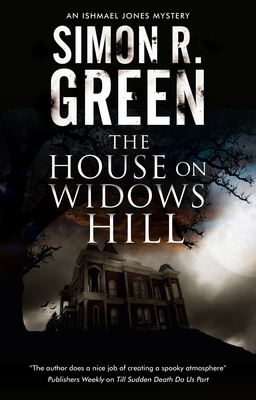 The House on Widows Hill (Ishmael Jones #9) by
The House on Widows Hill (Ishmael Jones #9) by 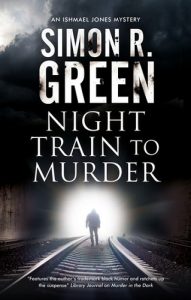 The House on Widows Hill is more of a twist on the typical English country house mystery than even Ishmael Jones and his partner Penny Belcourt usually have to contend with.
The House on Widows Hill is more of a twist on the typical English country house mystery than even Ishmael Jones and his partner Penny Belcourt usually have to contend with.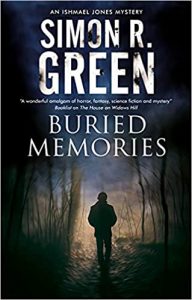 Someone in the ‘Organization’ is considering buying the place – or that’s what Ishmael and Penny are told, anyway. That night is a ‘one-night-only’ invitation to not just Ishmael and Penny as representatives of the potential buyer, but also to a whole team of “ghost botherers” (as Ishmael calls them) who have been begging – for years it seems – to get inside the old haunt. Along with one intrepid reporter who represents the family that owns the creepy pile – and really would like to get shed of the place once and for all.
Someone in the ‘Organization’ is considering buying the place – or that’s what Ishmael and Penny are told, anyway. That night is a ‘one-night-only’ invitation to not just Ishmael and Penny as representatives of the potential buyer, but also to a whole team of “ghost botherers” (as Ishmael calls them) who have been begging – for years it seems – to get inside the old haunt. Along with one intrepid reporter who represents the family that owns the creepy pile – and really would like to get shed of the place once and for all.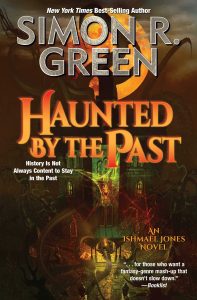 Escape Rating A-: I normally save this series for around Halloween, but I’m in the midst of a reading quandary that I hoped this book would solve – or at least beat back for a couple of days. I’m in the middle of listening to Erik Larson’s
Escape Rating A-: I normally save this series for around Halloween, but I’m in the midst of a reading quandary that I hoped this book would solve – or at least beat back for a couple of days. I’m in the middle of listening to Erik Larson’s 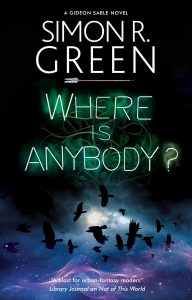 The House on Widows Hill very much has the classic haunted house vibe going on – even though with Ishmael and Penny involved the reader begins the story aware that it just isn’t going to go to any of the places that haunted houses normally go. That Ishmael gets shaken out of some of his internal certainties and securities added a bit to the ongoing arc of the series while at the same time ramping up the tension of both this book and the books in the series yet to come.
The House on Widows Hill very much has the classic haunted house vibe going on – even though with Ishmael and Penny involved the reader begins the story aware that it just isn’t going to go to any of the places that haunted houses normally go. That Ishmael gets shaken out of some of his internal certainties and securities added a bit to the ongoing arc of the series while at the same time ramping up the tension of both this book and the books in the series yet to come.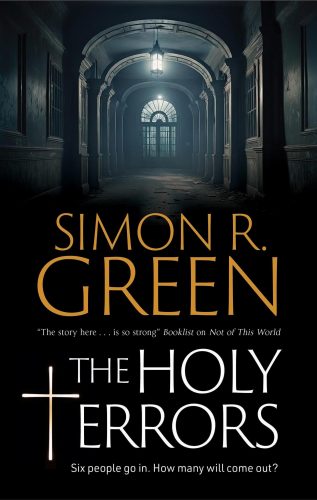 The Holy Terrors (A Holy Terrors mystery) by
The Holy Terrors (A Holy Terrors mystery) by 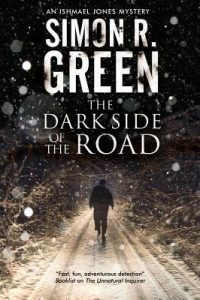 Escape Rating B-: I ended up with a LOT of mixed feelings about this one, some of which may have to do with having no love or even liking for so-called reality TV. (Although, honestly, if the author has any love for that genre it’s a particularly twisted version of it.)
Escape Rating B-: I ended up with a LOT of mixed feelings about this one, some of which may have to do with having no love or even liking for so-called reality TV. (Although, honestly, if the author has any love for that genre it’s a particularly twisted version of it.)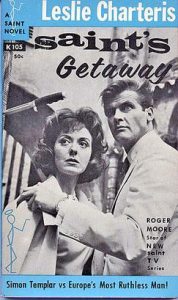 It niggled at me through the whole book as something familiar, but I was caught up just enough in the mystery at hand and the bell didn’t ring until AFTER I finished the book. Because that phrase, in popular parlance in British in the 1930s,
It niggled at me through the whole book as something familiar, but I was caught up just enough in the mystery at hand and the bell didn’t ring until AFTER I finished the book. Because that phrase, in popular parlance in British in the 1930s, 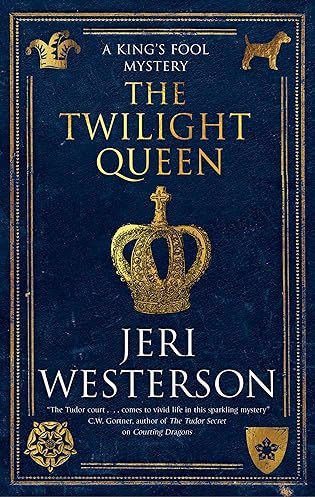 The Twilight Queen (A King's Fool mystery, 2) by
The Twilight Queen (A King's Fool mystery, 2) by  That his story – or rather the reinterpretation of his story through the characters of his six wives – has been reimagined yet again in the Tony Award winning Broadway play,
That his story – or rather the reinterpretation of his story through the characters of his six wives – has been reimagined yet again in the Tony Award winning Broadway play, 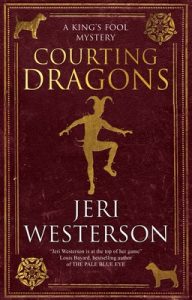 Escape Rating B: Genre blends such as historical mystery are always a balancing act – much like Will Somers position is a balancing act between making his sovereign laugh, forcing his master to stop and think – and keeping both his job and his head.
Escape Rating B: Genre blends such as historical mystery are always a balancing act – much like Will Somers position is a balancing act between making his sovereign laugh, forcing his master to stop and think – and keeping both his job and his head.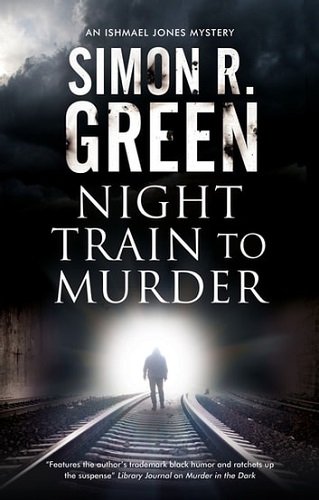 Night Train to Murder (Ishmael Jones #8) by
Night Train to Murder (Ishmael Jones #8) by 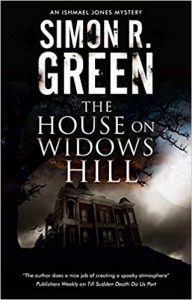 Because one of the things that this series does so very well, and with so much high-quality snark and occasional sheer bloody-mindedness, is that the worst monsters in this or any other universe are inevitably human. And that’s what keeps me coming back to this series, over and over and over again.
Because one of the things that this series does so very well, and with so much high-quality snark and occasional sheer bloody-mindedness, is that the worst monsters in this or any other universe are inevitably human. And that’s what keeps me coming back to this series, over and over and over again.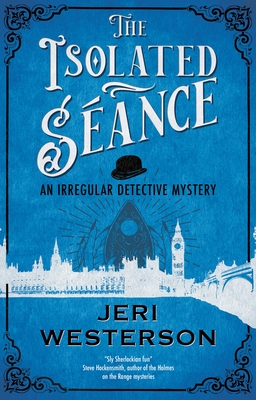 The Isolated Séance (An Irregular Detective Mystery #1) by
The Isolated Séance (An Irregular Detective Mystery #1) by 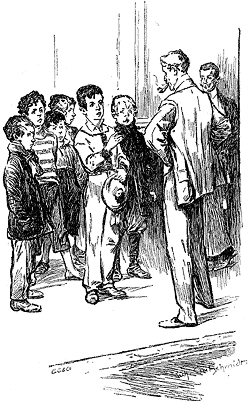
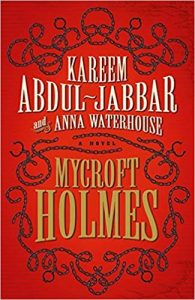 (Although both men are very young, Watson’s circumstances as a black man in a city that is prejudiced against him at every turn gives him a bit of caution and maturity that Badger sadly lacks. Watson’s perspective as someone who will always be considered an outsider even before he opens his mouth reminds this reader of the relationship between a young Mycroft Holmes and the more mature Cyrus Douglas in Kareem Abdul Jabbar’s
(Although both men are very young, Watson’s circumstances as a black man in a city that is prejudiced against him at every turn gives him a bit of caution and maturity that Badger sadly lacks. Watson’s perspective as someone who will always be considered an outsider even before he opens his mouth reminds this reader of the relationship between a young Mycroft Holmes and the more mature Cyrus Douglas in Kareem Abdul Jabbar’s 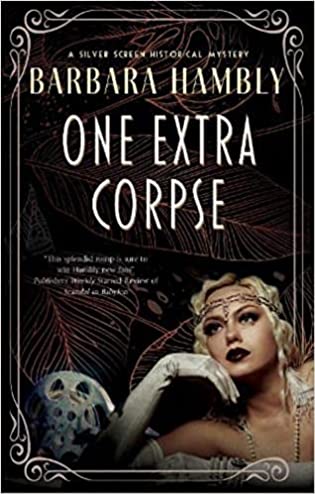 One Extra Corpse (Silver Screen Historical Mystery #2) by
One Extra Corpse (Silver Screen Historical Mystery #2) by 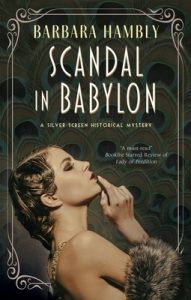 Escape Rating A: This was surprisingly meaty for a book whose cover kind of screams camp with vamp, but then, the silent movie era did have to maximize flash and style to convey emotion. After all, the characters couldn’t use their own words, or even the scriptwriter’s words.
Escape Rating A: This was surprisingly meaty for a book whose cover kind of screams camp with vamp, but then, the silent movie era did have to maximize flash and style to convey emotion. After all, the characters couldn’t use their own words, or even the scriptwriter’s words.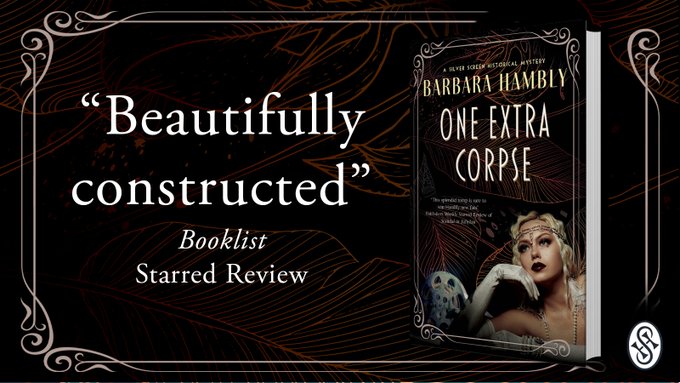

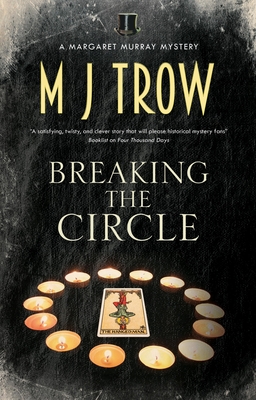 Breaking the Circle (Margaret Murray, #2) by
Breaking the Circle (Margaret Murray, #2) by 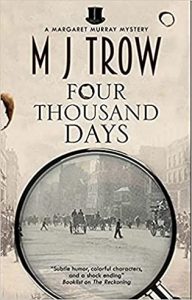 Escape Rating A-: What makes this series work, at least for this reader, is the voice of its protagonist Dr. Margaret Murray. Not just because she was a real person – as were both Flinders Petrie and Edmund Reid, but because she led the kind of life, had the type of career, and left behind the writing to make the adventures that her fictional avatar gets herself into seem not just plausible but even possible.
Escape Rating A-: What makes this series work, at least for this reader, is the voice of its protagonist Dr. Margaret Murray. Not just because she was a real person – as were both Flinders Petrie and Edmund Reid, but because she led the kind of life, had the type of career, and left behind the writing to make the adventures that her fictional avatar gets herself into seem not just plausible but even possible.